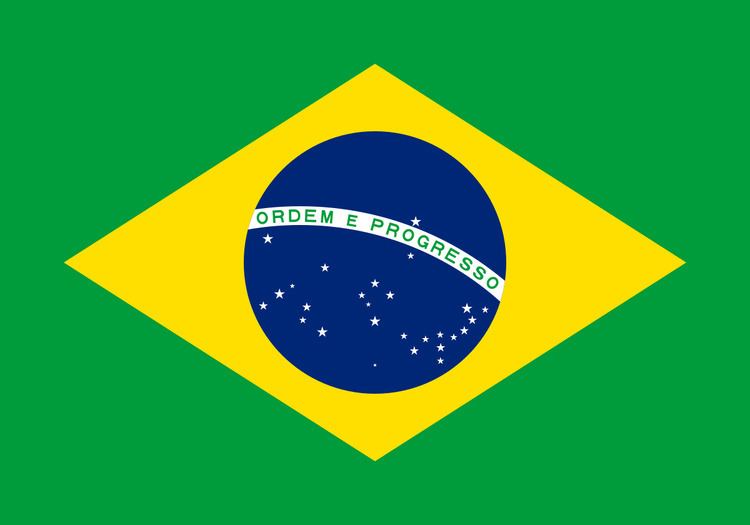 | ||
The Brazil lunar sample displays are two commemorative plaques consisting of small fragments of moon specimen brought back with the Apollo 11 and Apollo 17 moon missions and given in the 1970s to the people of the country of Brazil by United States President Richard Nixon as goodwill gifts.
Contents
Apollo 11
The Brazil Apollo 11 lunar sample display commemorative podium plaque consists of four "moon rock" rice-size particle specimens that were collected by Apollo 11 astronauts Neil Armstrong and Buzz Aldrin in 1969 and a small Brazilian flag that went to the moon and back.
The four "moon rocks" weigh about 0.05 grams total and are encased in a clear plastic button the size of a coin which is mounted to a wooden board approximately one foot square on a small podium pedestal display. The small podium plaque display also has mounted on it a small Brazilian flag that had been taken to the moon and back on Apollo 11, which lies directly below the "goodwill moon rocks". The small podium plaque display was given to the people of the country of Brazil as a gift by United States President Richard Nixon. Similar lunar sample displays were also distributed to all the states of the United States and all the countries of the world.
Apollo 17
The Brazil Apollo 17 lunar sample display commemorative wooden plaque (10 by 14 inches) consists of one "moon rock" particle specimen that was cut from lunar basalt 70017 and a Brazilian flag. The basalt 70017 was collected by Apollo 17 astronaut Harrison Schmitt on the moon in 1972. Once lunar basalt 70017 was brought back to earth from the moon, the basalt moon rock was cut up into small fragments of approximately 1 gram. The specimen was enveloped in a plastic ball and mounted on the wooden plaque along with the Brazilian flag which had been taken to the moon and back by the crew of Apollo 17. The wooden plaque display was then distributed in 1973 by President Richard Nixon to the country of Brazil as he did that year to all the countries of the world and all the states of the United States (the same as for the Apollo 11 plaque display gifts). This was done as a goodwill gesture to promote peace and harmony.
History
The Brazil Apollo 17 "goodwill moon rock" plaque display was presented by United States President Richard Nixon to Brazilian President Emilio Medici Garrastazu of Bagé in 1972. Garrastazu donated the commemorate plaque display to the Taborda family, overseers of the Museum Dom Diogo de Souza in Bagé, which has held it ever since. Bartira Taborda, daughter of the founder of the museum, declared that the museum was greatly honored and took great pride in receiving such a huge donation to the museum. The Brazil Apollo 17 "goodwill moon rock" plaque display has caused much excitement and pride for the city of Bage and the state of Rio Grande do Sul in Brazil.
The building in which the Brazil Apollo 17 lunar sample display is stored is a dilapidated nineteenth-century structure. The building is now closed because of its critical need for repairs. In 2000 the museum considered selling the Brazil Apollo 17 "goodwill moon rock" plaque display, but there was much uproar and resistance to this idea by the residents of Bage. The main curator and overseer of the museum withdrew the idea to sell the Brazil Apollo 17 "goodwill moon rock" plaque display and has considered other means to raise funds. The museum now considers itself a special honor guard over such a unique piece. The Brazil Apollo 17 "goodwill moon rock" plaque display has been exhibited to the public on select occasions over the past 30 years and is kept in a secure vault.
